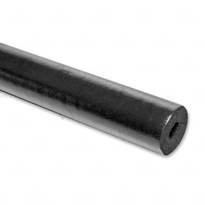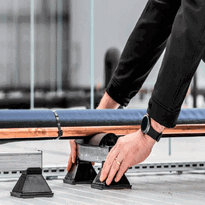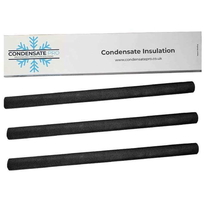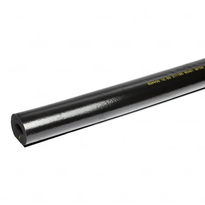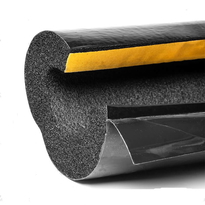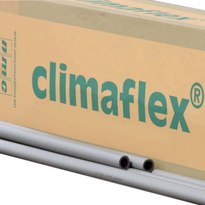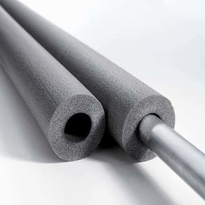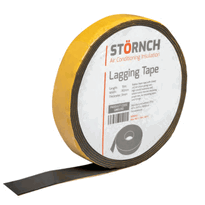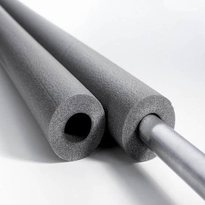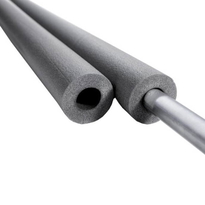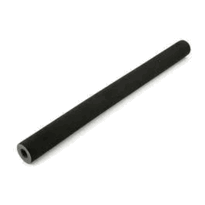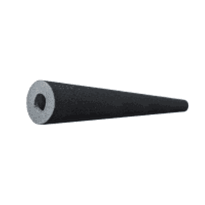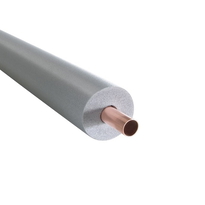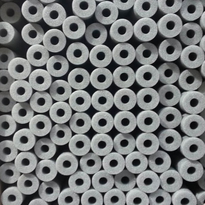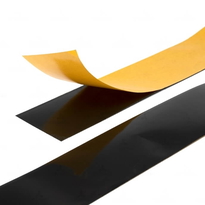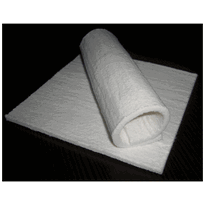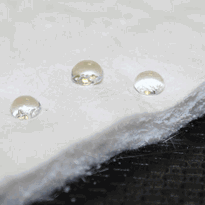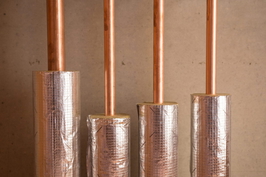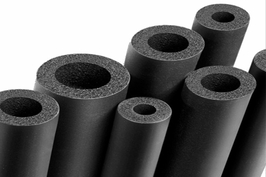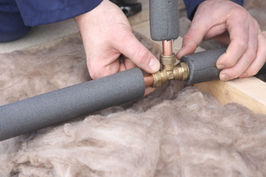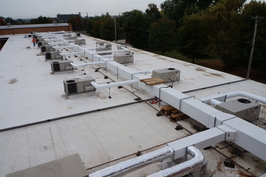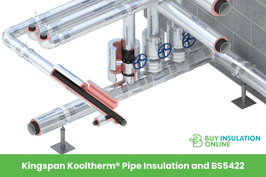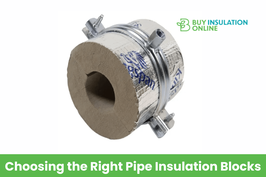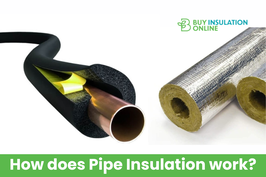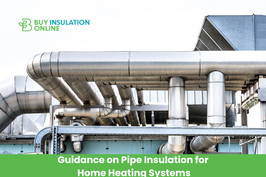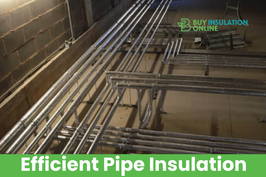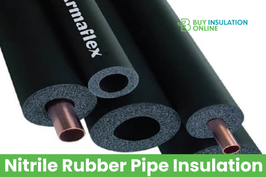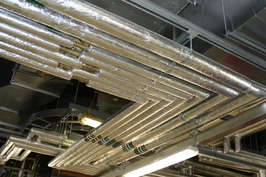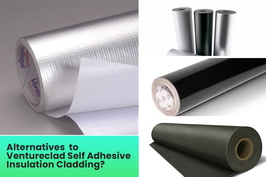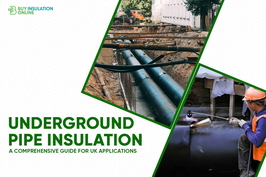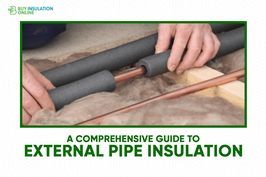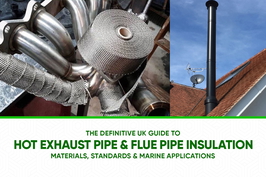B&Q Outdoor Pipe Lagging
B&Q offers a range of outdoor pipe lagging products designed to enhance energy efficiency, prevent freezing, and safeguard plumbing systems exposed to harsh weather conditions. Made from materials such as polyethylene foam and rubber foam, these products are available in various sizes—15 mm, 22mm, and 28mm—to ensure a precise fit when insulating water pipes.
Proper installation is essential for maximum effectiveness. Begin by accurately measuring the length and diameter of your pipes. Always clean the surfaces thoroughly before applying the lagging to remove dirt, dust, and moisture, which can compromise insulation. When fitting, ensure the lagging snugly encases the entire pipe, and seal joints securely using appropriate tape or fittings to prevent heat loss and protect against the elements.
Choosing the right size and type of lagging depends on your specific requirements, such as the location of the pipes and the climate conditions. Proper selection and installation not only help prevent freezing and burst pipes during cold months but also contribute to improved energy efficiency.
By following these guidelines, you can effectively insulate your outdoor piping system, ensuring it remains functional and protected throughout the winter.
Benefits of Using Outdoor Pipe Lagging
It plays a vital role in enhancing energy efficiency by reducing heat loss, which helps maintain water temperature for longer periods. This reduction in heat transfer not only decreases the need for reheating water but also results in lower utility bills.
Furthermore, lagging provides crucial protection against freezing temperatures by forming a robust barrier against cold air exposure. This significantly reduces the risk of pipes bursting—an expensive and disruptive problem during the colder months.
In addition, pipe lagging helps minimize condensation and corrosion by insulating the pipe surfaces from external moisture. This protection extends the lifespan of your plumbing system, ensuring it remains reliable over time.
Implementing lagging can lead to substantial cost savings through decreased energy consumption and by preventing damage caused by leaks or bursts. It also promotes safer operation by maintaining consistent pipe temperatures, thereby reducing the likelihood of accidents or failures.
Overall, pipe lagging is a cost-effective and practical solution that improves safety, reduces ongoing maintenance costs, and ensures continuous access to hot water. Proper insulation also minimizes water vapour transmission, helping to prevent moisture buildup and internal condensation within pipes.
It's an indispensable part of maintaining an efficient, durable, and safe plumbing system, especially in the UK’s varying climate conditions.
Types of Materials Available at B&Q
At B&Q, a range of pipe lagging materials are available to meet various insulation needs and environmental conditions across the UK.
Foam pipe lagging is offered in diameters such as 15mm, 22mm, and 28mm, and is typically made from polyethylene or rubber foam, providing flexibility and effective thermal insulation. Proper insulation helps maintain temperature and prevents freezing. These materials are designed to provide effective soundproofing for pipes, reducing noise transmission and vibration.
Foam lagging products from brands like Noma Rubber Foam and Climaflex are suitable for reducing heat loss and preventing pipe freezing, making them ideal for both domestic and commercial applications.
Polyethylene pipe lagging, often supplied by Climaflex, is crafted from closed-cell foam, which offers water resistance and admirable thermal insulation for outdoor or exposed piping.
Rubber foam lagging, manufactured from nitrile rubber, provides enhanced durability and resistance to weather elements and physical wear. This type of lagging is mainly available in 15mm and 22mm sizes, suitable for more exposed or demanding conditions.
In addition, specialized tap covers and insulation accessories are available to enhance comprehensive pipe protection and insulation solutions, ensuring your piping remains well-insulated and protected throughout the year.
Suitable Applications and Installation Tips
Proper application of B&Q outdoor pipe lagging depends on selecting the suitable insulation for specific environmental conditions and ensuring correct installation techniques. It's important to measure pipe dimensions accurately, clean pipes thoroughly, and avoid fitting during wet or icy weather. A proper sealing around fittings and joints also prevents heat loss and exposure to moisture. Using appropriate materials ensures optimal thermal performance and durability. Pipe lagging should be applied to outdoor water pipes, pipes in unheated spaces such as garages, lofts, or external walls, and on hot or cold water systems to help retain heat or prevent freezing. When installing, carefully position the insulated cover, secure it firmly using adhesive or tape, and cut the lagging precisely to fit around elbows or fittings. Insulation should run continuously along the entire length of the pipe, including joints, while avoiding compression, which can reduce thermal efficiency. Regular inspection and timely replacement of the lagging will help maintain its effectiveness and protect your plumbing system throughout the year.
Safety Standards and Environmental Benefits
B&Q outdoor pipe lagging complies with a range of safety standards designed to ensure both effective performance and user protection.
The polyethylene foam material conforms to European standard EN 14313 for thermal insulation products, providing reliable insulation properties. It carries a Euroclass fire performance rating of E, confirming compliance with fire safety requirements.
Its rot-proof, odorless, and non-hydroscopic properties reduce health risks associated with mold, dampness, and bacteria development. Proper installation involves wearing protective gear and following safety guidelines, minimizing injury risks.
This product is suitable for use with both copper and plastic pipes, ensuring secure and safe application across various plumbing systems. Additionally, the product's environmentally friendly formulation supports sustainable practices by aiding in energy conservation and reducing carbon footprint through insulation efficiency.
Overall, adherence to safety standards enhances user confidence and safety during maintenance and installation activities.
How to Choose the Right Pipe Lagging for Your Needs
Choosing the appropriate pipe lagging begins with accurately measuring the diameter of the pipes to ensure a proper fit that maximises insulation efficiency. Correct sizing prevents heat loss, condensation, and material gaps that can compromise performance. The 15mm diameter polyethylene foam pipe lagging is suitable for small water pipes and frost protection, providing effective thermal insulation. When selecting lagging, consider the following factors:
Match available sizes (15mm, 22mm, 28mm) to the pipe’s diameter for a snug fit
Evaluate material properties such as durability, moisture resistance, and thermal performance
Confirm compatibility with pipe types, including copper or plastic, to prevent deterioration
Assess insulation thickness (e.g., 19mm foam) to optimise thermal resistance
Consider the installation environment, whether indoors or outdoors, to select appropriate fire safety ratings and weather resistance
Choosing lagging with moisture resistance properties can help prevent mould and corrosion in outdoor and damp settings. Accurate measurement, combined with these considerations, ensures an effective, long-lasting insulation solution tailored to your specific needs.
Conclusion
Selecting suitable outdoor pipe lagging from B&Q involves carefully considering material types, application requirements, and compliance with safety standards. Proper installation is essential to achieve effective insulation, safeguard pipes from environmental damage, and promote energy efficiency. By understanding the key factors involved, users can make well-informed decisions to enhance durability and performance. A comprehensive assessment of these aspects allows for accurate matching of lagging products to specific outdoor piping needs, ensuring long-term functionality and minimal maintenance.
